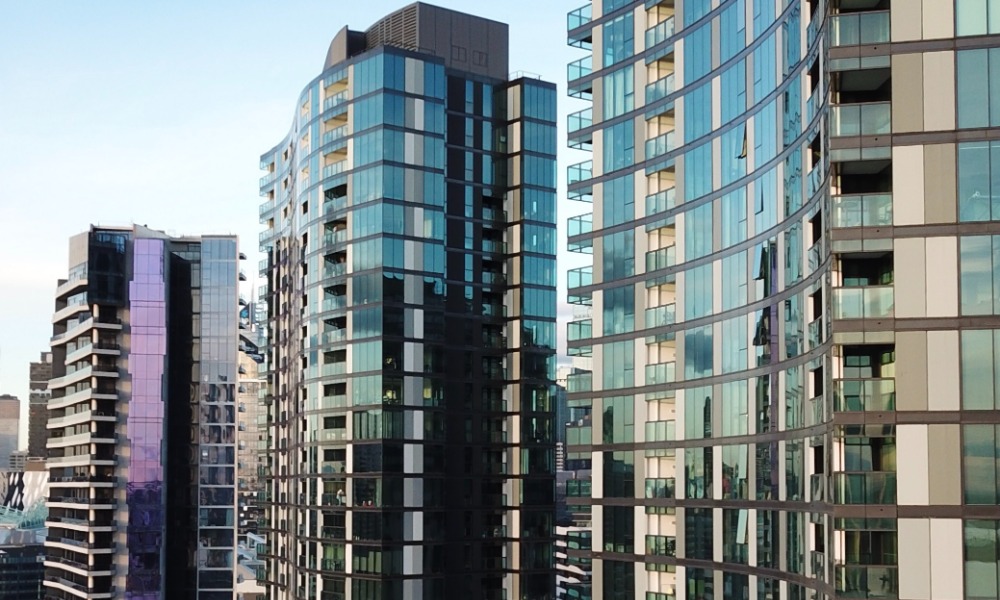Industry veterans weigh in on what awaits the commercial landscape this year

What’s in store for commercial real estate (CRE) in 2023? Officials at CBRE have their take on it.
In this week’s presentation dubbed the “Weekly Take,” CBRE hosted Bryon Carlock, PwC’s US real estate lead and Richard Barkham, CBRE’s global chief economist, for insights into what the year might bring for CRE.
Starting with the “big picture”
Barkham began by providing a “big picture” assessment on the economy: “So we’re not yet at the peak of the rate cycle,” he said. “That will happen in 2023, towards the end of the year. And, of course, rates have been rising very rapidly through 2022 in order to combat inflation. It’s the most aggressive rate hike in history. Interest rates in the United States are the highest they’ve been in 15 years. So that is all going to be rather suppressive of economic activity in 2023 and will lead us probably into a moderate recession over the course of the year.
“But on the upside, I do think it will be enough to bring inflation under control. Inflation isn’t going to drop like a stone, but it will decrease over the course of 2023, allowing rates to be cut and a revival in the economy in 2024.”
Carlock agreed with the assessment: “Sadly, I think we’re going to be settling into a new normal of higher rates,” he said. “We’ve been addicted to cheap debt for over 10 years, and I think that the industry is going to recalibrate accordingly. Sadly, it comes at a time when there’s such healthy demand for certain product types on the street that really has put a stop and a slowdown to developer pipelines and plans at a time when, frankly, our cities and many of our skylines need to be reimagined and redeveloped. So I’m hoping that we can find this new normal quickly.” Moreover, he agreed with Barkham it likely will be 2024 before rates temper and capital becomes more available. “Although there are some early signs that lenders are coming back into the market and the non-bank lenders, the unregulated lenders are actually quite active right now,” he added.
Read more: Historical mortgage rates in the USA: Highest High and Lowest Lows
It is green in the future
Carlock envisioned what the future might look like in a literal sese: “This next cycle is going to be all about development and redevelopment as we reimagine the built environment, try to make it more environmentally sensitive and appropriate, add more green space, trees, walking paths, make our urban centers more livable and walkable,” he said. “And that’s going to require a lot of development, which requires, as you know, a lot of short-term floating debt from the banks. And this is a Fed-driven, top-down driven slowdown to tame inflation. And they typically come down in rate reductions much more slowly and deliberately than they have gone up as we’ve watched these big increases.”
The length of inflation is an unknown
Barkham attempted to predict the breadth of inflation in the coming months: “In all honesty, there’s still a lot about inflation that we don’t get right,” he said. “We fail to see it picking up as aggressively as it has done. And we may be overstating how slow it will be for inflation to slow down. So we may well get some upside surprises, if you like, on inflation in 2023, which will allow monetary easing. On the other hand, I think there are downside risks as well. One is, you’ve got very high rates of wage inflation in the economy right now and that might prove sticky. And the Fed isn’t just looking at the headline rate of inflation, it is also looking at 6.2% wage increases. So the labor market has to cool down substantially for rates to come down.”
Multifamily remains strong amid inflation
Barkham touched on the strength of the multifamily market, even as demand outpaces supply. “I think our figure is about four million short,” he said. “It could be five million, but it’s not just in the United States. The Western world is grossly short of homes, so the fundamental demand remains in place. I think the fact that mortgage rates are still around 6% means that people aren’t going to be buying homes over the next 12 months. That pushes people in the multifamily sector for a whole range of reasons. High density living done correctly is more green. It’s more energy efficient. Where is it going to come? I think the majority of new multifamily is going to come from ground-up developments, particularly as we have to encompass new technologies and new ways of energy saving into the environment.”



